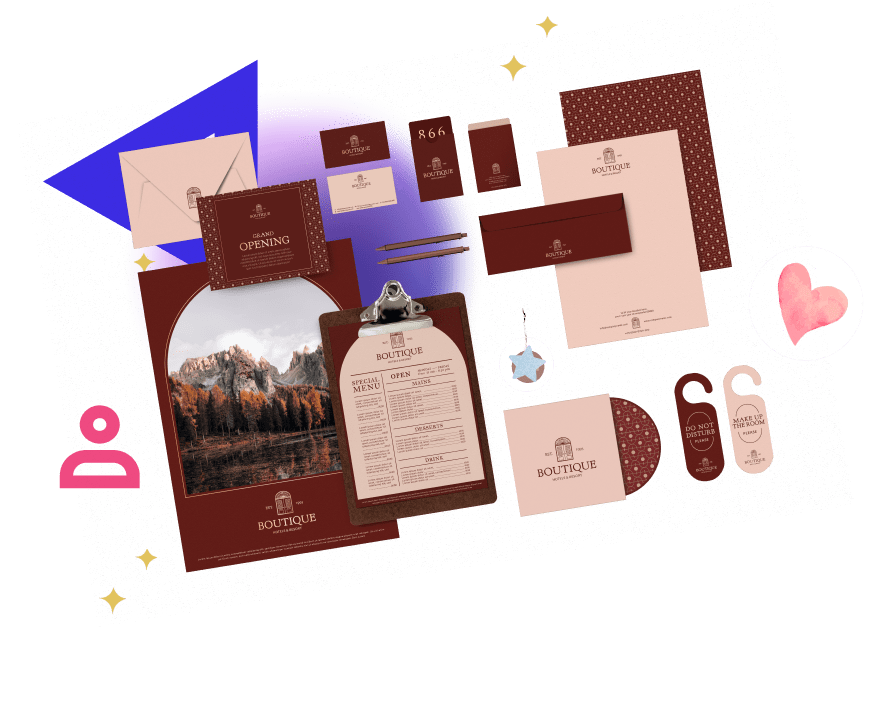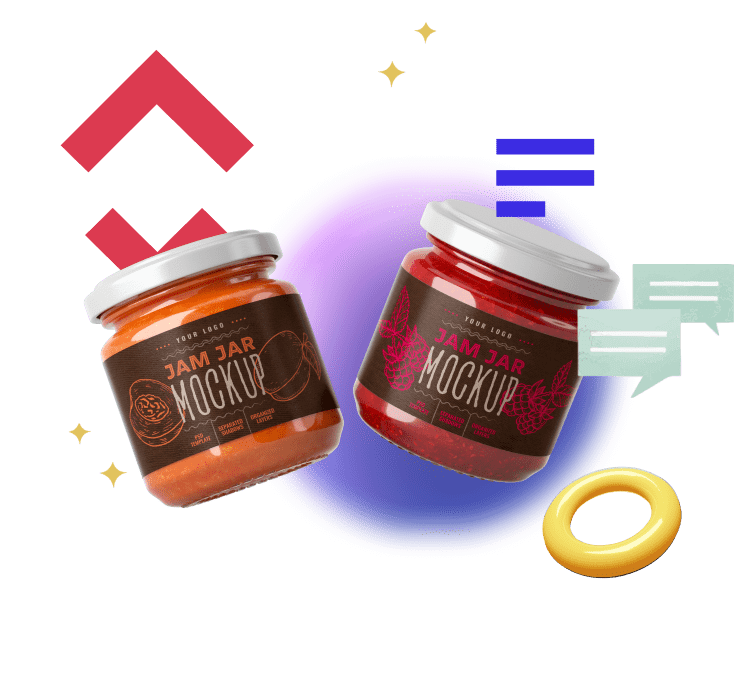Brand identity is likened to a powerful ally that helps restaurants establish a strong presence and survive in the market for the long term.
And when entering the business field, brand design is the first task that investors need to do. So what does brand identity include? Let’s find out more with TELOS in the article below.

1. The important role of restaurant brand identity
Both in theory and in practice, a brand identity system brings many benefits to both restaurants and customers. Among countless competing restaurant brands, a brand identity makes the restaurant stand out, attract more customers, and generate higher revenue.
1.1. For the restaurant itself
A brand identity always brings significant value to the restaurant.
- Establishing and positioning the restaurant’s position in the Food & Beverage market in particular.
- Showing customers the level of professionalism of the restaurant.
- Creating a unique and distinctive brand image that impresses customers compared to other competitors, significantly reducing costs for brand marketing.
- Once the restaurant has achieved a unique and memorable image in the minds of customers, brand recognition on the market becomes easy.
- Creating a loyal customer base for the restaurant brand. Building brand value and assets by enhancing customer awareness of its brand identity system.

Bộ nhận dạng thương hiệu giúp tăng độ uy tín cũng như sự chuyên nghiệp của nhà hàng.
1.2. For the customers
In addition, the branding system plays a significant role in promoting the restaurant’s brand image to customers.
- It increases customers’ understanding of the restaurant’s brand. Customers do not need to spend a lot of time researching the restaurant’s credibility.
- An attractive branding system easily attracts customers at first sight, creating a sense of security and trust when choosing the restaurant’s services. Additionally, it helps to increase the positive perception of the restaurant and receive positive feedback from customers.
- The branding system alsohelps customers choose a restaurant that suits their needs and preferences.
2. What are the components of a restaurant’s branding system?
Considering the benefits that a branding system provides, designing a branding system should be the first task when establishing a restaurant. The branding system should reflect the mission, vision, and quality that the restaurant wants to deliver to its customers.
This is also an essential factor in evaluating the professionalism of any restaurant brand. There are many components that make up a branding system, including logos, menus and brochures, flyers, outdoor branding systems, uniforms, tablecloths, and food packaging.
2.1. Logo
The first and foremost component is the logo. While not the only factor, it is always the first thing that comes to mind when a restaurant starts creating a branding system.
In a branding system, logo design is diverse in shape, color, and style, not only for domestic restaurants but also for various countries.

Logo uses images and icons combined with a harmonious color scheme
2.2. Menu và brochure
The menu is the second element that customers often interact with in the restaurant’s brand identity system. Therefore, a unique and well-designed menu can also leave a good impression on customers when using the restaurant’s services. The content and images inside the menu should also be carefully invested in.
The materials used to make menus are often hard paper, wood, or cardboard. As for the cover of the menu, leather is a popular material. Leather menus can make a strong impression and create a more luxurious and elegant feel.

Menus are made from many materials, but the most common are still hard paper and leather.
Not only that, cleaning also becomes easier and the life of the menu book is much longer than that of paperboard material. Therefore, leather menus and brochures are preferred for use in the brand identity.
2.3. Flyer
In branding, flyers and brochures have some slight differences. Flyers are often used during restaurant openings or birthdays and will often contain more general information than a brochure.
For the rest, flyers and brochures are pretty much the same. Brochure is designed to be attached to the dish to make it attractive, while flyers provide customers with more diverse information than brochures. Therefore, flyers are also listed in the elements of the brand identity system for restaurants.
2.4. Outdoor brand identity
The outdoor brand identity set includes signs at the headquarters, branches, agents, reception desks, Pano signs… And these elements need to be focused and invested in design because of their size. It is large and placed in crowded places or in front of the store, so it needs to make an impression on customers.
Of the signs of the above brand identity, the Pano sign requires the most design investment because of its large size, so the standards to be followed in the design are also more, the machine configuration uses the design. Pano also needs to be taller to be able to perform Pano design tasks.

The outdoor brand identity set attracts a lot of attention
2.5. Uniform
One element that often comes into direct contact with customers during the restaurant service experience is the uniform of restaurant staff. Depending on the company, uniforms will be designed specifically for the receptionist, chef, manager or director of the restaurant.
In the brand identity, the uniform is an indispensable product, making an important contribution to show the restaurant’s professionalism and integrity in welcoming and serving customers.
Each restaurant will have its own design with the style of the restaurant but still create consistency in the brand identity system.

Uniforms are also a factor that creates consistency in the brand identity system
2.6. Tablecloths
Tablecloths are often an element that is not mentioned much in the brand identity because it requires the use of printing techniques on fabrics. This is not an easy job like printing a regular menu or flyer, so the investment costs are often quite high.
With popular restaurants, they often choose to ignore this factor and buy tablecloths at the supermarket or in the market. But there are still a few high-end restaurants that choose to print on tablecloths to make an impression on customers.
So depending on the budget as well as the scale that the restaurant can consider when designing the brand identity for the restaurant.
2.7. Food wrapping paper
With today’s busy life, many people choose to buy food to take away instead of enjoying at the restaurant, so the element of food wrapping is also gradually being invested. There are many materials that can be used to package food such as plastic boxes, paper, foam boxes, etc. Each restaurant will choose food packaging materials that match the restaurant’s style.
The food wrapping material is oil-absorbing paper, which absorbs oil so that it can absorb all the grease from the dishes. And of course, the paper must be treated so that the ink does not affect the quality of the food as well as the health of the customer.

Food wrapping paper often uses paper that has the ability to absorb oil
3. Conclusion
After learning more about the elements in building a brand identity, you can choose the elements that are appropriate for the size and budget to apply to the marketing strategy for the restaurant brand. myselft.
The above factors bring benefits not only in terms of revenue but also in prestige, professionalism and good impression on customers who have been, are and will use the restaurant’s services.

And businesses should build a brand identity that matches the ability and style of the restaurant
Through the above article, TELOS has provided more information about the restaurant’s brand identity. And investors can take the first step in building a brand identity system for their restaurant.
Hope the above information answers your questions about restaurant brand identity. Wish you have a good day.
The article and images were compiled by TELOS





















